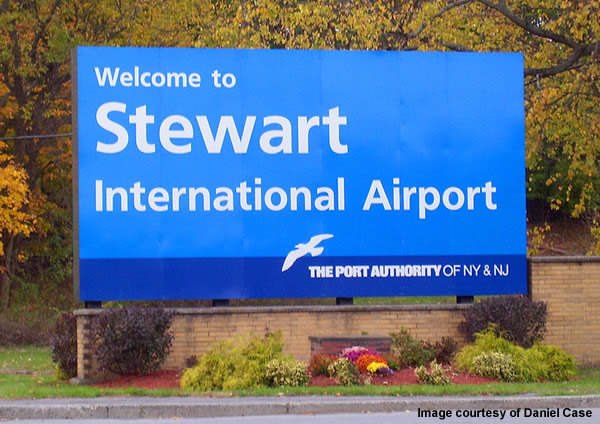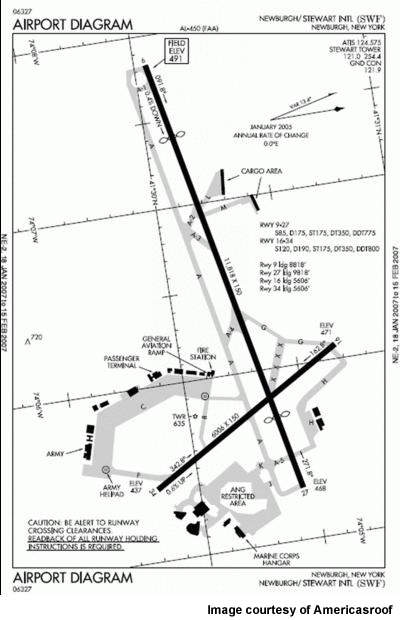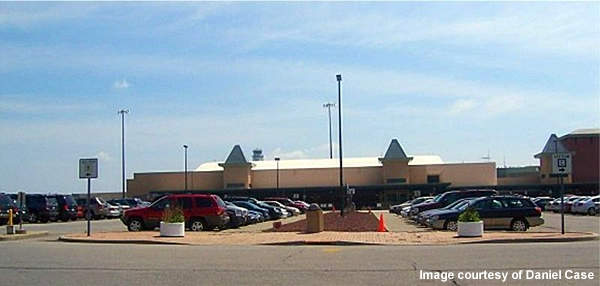Stewart International Airport in Hudson Valley, New York, is operated by the Port Authority of New York and New Jersey.
The airport is owned by the New York State Department of Transportation and was privatised in March 2000 under a 99-year lease agreement with the National Express Group. The Port Authority took over airport operations in 2007 and will pay $78.5m to NEG for the remaining 93 years of lease period.
The airport was initially developed as a military base in the 1930s. It was designated the Stewart Air Force Base in 1948. The state of New York acquired the base in 1970 and converted it to an airport.
Delta Connection, JetBlue Airways and US Airways Express operate their services from the airport. The airport handled 400,000 passengers in 2009.
Expansion
The expansion plans of the airport have been initiated after privatisation. The plans include renovations such as the addition of a new terminal and construction of a train station next to the new terminal.
In September 2010, the Port Authority of New York and New Jersey initiated Phase 1 of the expansion of the passenger terminal. The terminal expansion is expected to cost approximately $18m.
Phase 1 works include addition of 25,000ft2 to the passenger terminal to build permanent facilities to handle international flights. An amount of $2m was approved for the planning and design of the facilities and the same will be reimbursed through passenger facility charges. The planning and design stages are expected to be completed by December 2011.
The future phases will include construction of a baggage carousel, customer service space and additional bathrooms. The runway 16/34 will be extended and additional taxiways will be built.
Finance
The operator is funding $500m as part of a 10-year capital improvement programme for the expansion of the airport. By the end of 2009, the airport has received approximately $16m to complete several modernisation programmes.
An amount of $5.9m has been allocated for improving the taxiway lighting, $2.7m to replace the weather instrumentation power circuit and $2.7m to develop approach lighting, fixtures and cables.
The airport has also received funding from the Federal Aviation Administration (FAA) several times in the past. The FAA granted $5m in 1991 as part of the Military Airport Program for capital improvement.
It also funded $900,000 for updating the master plan and carrying out an environmental review in 1991. In 1992, it provided $3m for the expansion of airport terminal.
The airport also received another $13m for the rehabilitation of fuel farm, taxiways and airside signage.
Terminal
The passenger terminal of the airport was opened in 1997. The first floor of the terminal features eateries and a news stand.
Baggage claim is on the main level of the terminal and the ATM is near the baggage claim.
The check-in counters are located to the right of security. The second floor of the terminal houses seven passenger gates.
The airport provides Wi-Fi services throughout the passenger terminal.
Three EDS baggage screening systems were installed at the airport to improve security.
A 50,000ft² air cargo building was opened at the airport in 1989.
Runways
The airport has two runways designated 9/27 and 16/34 which are 3,602m and 1,831m long respectively. Both the runways are 46m wide.
Air traffic control
The FAA commissioned a new control tower at the airport in 2006. LERA designed the tower, base building and generator enclosure. The ATC was built of a concrete slab on a composite metal deck, along with braced steel framework.
Parking
The airport provides short and long-term parking facilities. Short-term parking is located directly across from the terminal and the long-term lot is adjacent to the short-term parking lot.
Both the parking lots provide spaces for disabled passengers. The airport also offers an overflow lot which is accessible from the passenger terminal.
Car rental
Car rental agencies are located on the main level across the security screening and baggage claim area.
Ground transportation
Both public trains and buses are available to and from the airport. Taxi, van and limousine services are available near the baggage claim area.







